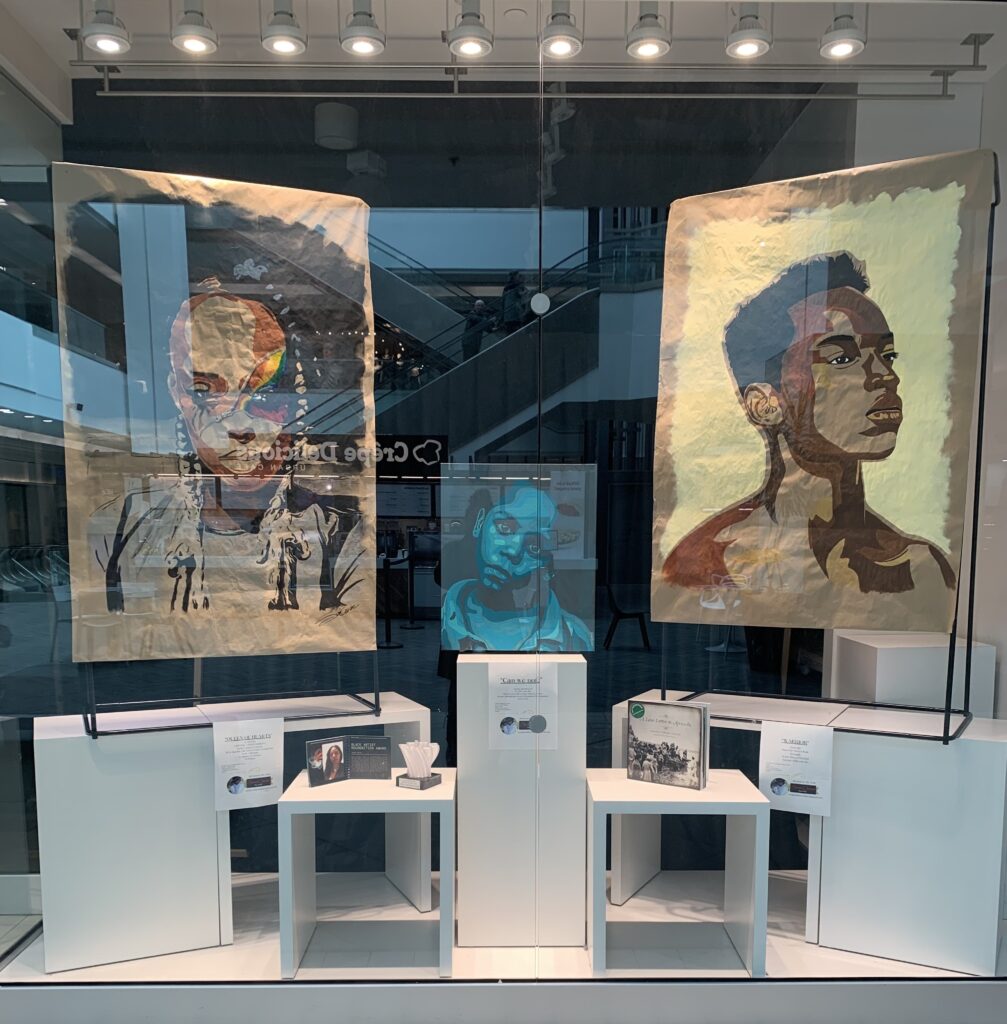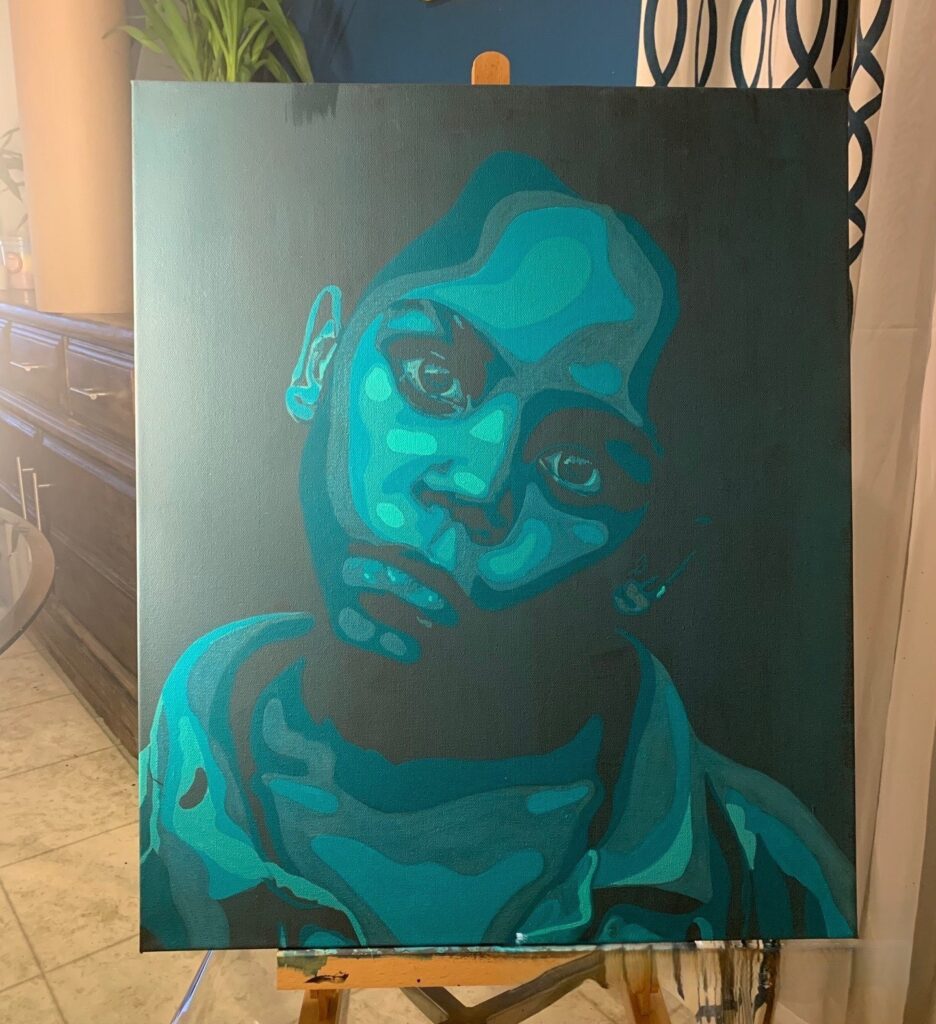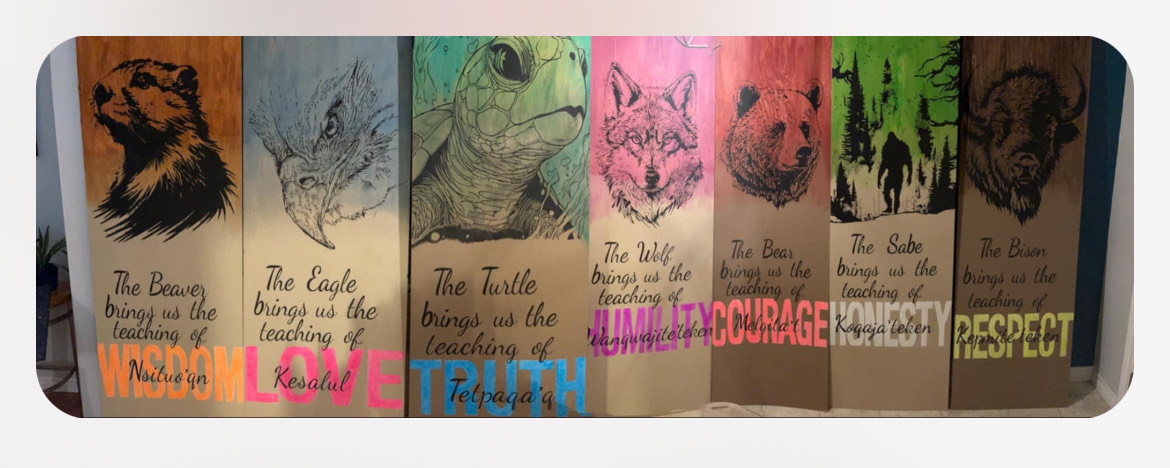Visual artist and painter, Tonya “SamQwan” Paris wants to create a space where Black art is respected and celebrated.

Editor’s note [14/03/2025]: This article has been updated to reflect new information from Darlene M. Strong, who established the first known African Nova Scotian-owned gallery in Nova Scotia.
Tonya “SamQwan” Paris is an artist on a mission to spotlight the experiences of Black and African Nova Scotian people through art.
She dreams of opening the first Black-owned art gallery in the HRM, ensuring that Black artists receive the recognition and respect they deserve. This goal is based on Tonya’s life experience and her roots as an Indigenous Black, Mi’kmaw and Cree artist.
“Black art has a place in this world, just like any other,” she says. “I don’t want our voices to be stifled based on other people’s limited perceptions of us—our art is powerful and deserves to be seen.”
FROM POLICE OFFICER TO PAINTER
Currently living in Eastern Passage, it took a while for Tonya to take her vocation as an artist seriously.
“I’ve been drawing since I was a little girl and my mom encouraged me to hone my artistic talent,” she says. “But I didn’t think I was good enough to be an artist, so I became a police officer instead.”
Tonya was the first Black-Indigenous woman on the Halifax police force and went on to join the military police for a few years, but she felt unsatisfied in her career.
“Here I was doing all these great things, but it didn’t fulfill me as an individual, and I couldn’t figure out why,” she says. “Through all that, I would always go to art for comfort; whether it was doodling or designing or coloring something.”

Tonya slowly started embracing her gift for art, starting a career as a hairstylist while doing small drawings on the side. Then, in 2015, a friend approached her to contribute a few paintings to a children’s auction.
“I told them, I don’t paint, I draw, but my mom said, ‘what’s the difference,’” Tonya recalls, laughing. “I knew she wouldn’t leave me alone until I did it. So, I did it and the paintings sold within the first 30 minutes.”
Painting has now become Tonya’s main artistic medium. However, she’s inspired by her experience as a Black and Indigenous woman, using everyday objects and tools to tell the stories of her community.
“I paint what I feel, and some days I don’t feel like painting,” she says in an interview with Art Pays Me creator, Duane Jones. “I might sew a Ribbon Skirt instead and add kente cloth to it because that’s what I’m feeling, or maybe I will do some beading on canvas. Art has allowed me to express the different facets of who I am as a person—both Black and Indigenous. So whatever mood I am in that day, I can produce art in that medium.”
In between finding her voice as an artist and establishing her new-found career as a painter, Tonya applied to NSCAD University for the Bachelor of Fine Arts degree, but her application was denied.
“The rejection felt heavy,” she admits. “It made me wonder if I was making the right decision.”
Undaunted, she kept working at her art, selling more and more paintings. She then went on to have her first art show in 2018 and won Bronze in the Halifax Visual Artist of the Year Award (2017-2018).
Five years later, in 2021, Tonya was invited back to NSCAD as an artist-in-residence fellow at the Institute for the Study of Canadian Slavery. During her residency, she met an instructor who had reviewed her application to NSCAD.
“He said to me, ‘Usually, when a new artist starts developing, a lot of times they don’t have a style, or a feel, or the technique. You already had all that,’” she recalls. “What I was doing was already working and going back to school would have only slowed me down.”
This feedback boosted Tonya’s confidence to keep pursuing her art, and soon later, she became the first artist to have an art show in the Paul O’Regan Hall at the Halifax Public Library in 2022 and went on to receive the 2022 Creative Nova Scotia Black Artist Recognition Award. Tonya is also listed as Canada’s Top 100 Black Women to Watch in 2024.
The average Black artist never gets a showing and people never get to see their art [...] I want them to have a space where they feel their art is worth showing.
Tonya “SamQwan” Paris

OPENING A BLACK ART GALLERY
Tonya aims to open the HRM’s first Black-owned art gallery—which would be a safe space for Black artists and a hub for Black cultural expression, education, and community engagement.
“The average Black artist never gets a showing and people never get to see their art because it’s so personal to them,” Tonya explains. “I want them to have a space where they feel their art is worth showing. We have a lot of talent here, but our work gets overlooked because we’re from little Nova Scotia. I want to change that.”
Update [14/03/2025]: This isn’t the first time a Black artist has worked to develop a space for Black creatives. In 1997, ArtSmart artist, published author, educator and current professional counselor Dr. Darlene M. Strong PhD, founded the Strong’s Community Development Program in Amherst, Nova Scotia.
Strong identified a void in the Black art sector and established the first known African Nova Scotian owned-and-operated gallery and cultural space in her mid-1800s, fourth generational historic home in Cumberland County.
Strong also assisted two subsequent art galleries to be established in Cumberland County, while supporting other galleries in the area. She has created innumerable art pieces and traveling exhibits in addition to featuring, buying, selling, and collecting art, business plan development and ongoing promotion of Black culture.
Tonya’s vision builds on Strong’s legacy, aiming to establish her own, Black-operated art gallery. But for Tonya, that starts with Black artists taking control of their own creative process.
“With the gallery, I want to allow Black artists to speak their truth and setup what they like and how they like it, without limitations,” she says.
Tonya’s biggest challenge is securing funding for a suitable location, professional curators, and compensating artists that are interested in displaying their art.
“Everything we’ve done so far is self-funded,” she explains. “We want a good location with a lot of visibility and foot traffic; but places like Barrington Street is about $35 per square foot, that’s around $4,000 a month. That’s not sustainable.”

As African Heritage Month comes to an end, Tonya says that for meaningful change to happen, the art sector needs to actively support and invest in Black artists year-round, whether it is through funding or offering spaces for Black creatives to exist.
“We have artists like Tara Taylor who is still fighting for the Charles Taylor Theatre to be recognized as the first Black theatre in Nova Scotia, but she can’t find the support for that,” she says. “That’s because Black people don’t run these institutions, we don’t run Art Nova Scotia, we don’t run the Federal grants. But we need this kind of support to keep going, to express ourselves, to keep creating.”
Another way to support Black artists is through professional education, as many emerging artists might not know where to look for grants and opportunities.
“Education includes knowing how to price our art, how to write a proposal, and how to be confident in ourselves as an artist,” says Tonya.
But the most important thing that Tonya advises emerging Black artists to do is to connect with other established Black and African artists.
“Just be yourself and don’t be afraid to reach out,” she says. “I didn’t know what I was doing until people taught me what to do. Listen to the people that have walked that road before because they have encountered the same obstacles that you’re going to encounter.”
Connect with Black and African Nova Scotia artists through Black Artists Network of Nova Scotia (BANNS): https://banns.ca/
